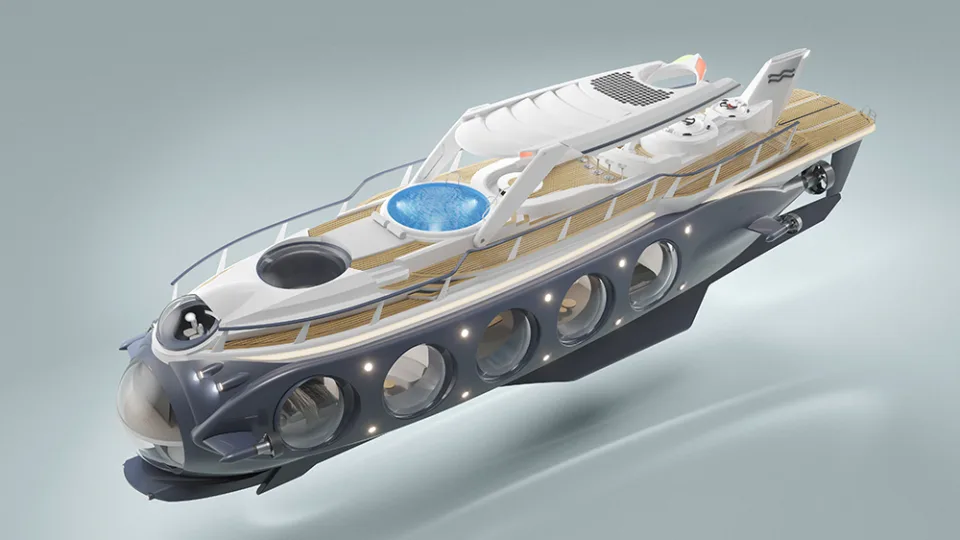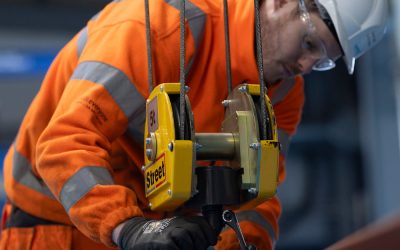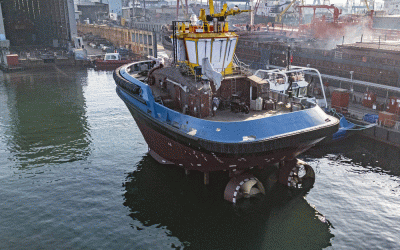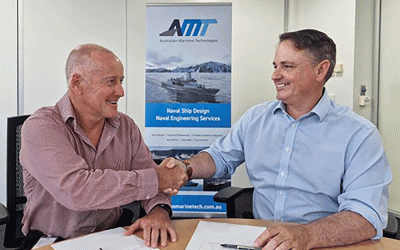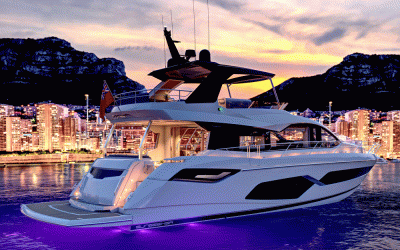Submarine tenders are one way to wow your guests, but how about inviting them aboard an actual submersible yacht? The 37.5m Nautilus concept, unveiled by Dutch builder U-Boat Worx at this year’s Monaco Yacht Show, aims to finally realise a vessel inspired by Jules Verne’s 1870 sci-fi/adventure novel 20,000 Leagues Under The Sea – namely, “a luxury yacht with dive capabilities” – to take ‘yachting in style’ deep beneath the water surface.
Designed to function as both a yacht and a submersible, the 1,250tonne, diesel-electric Nautilus is rated for a maximum depth of 200m – about the same as a typical work-class ROV – and would have a surface cruise speed of 9knots and an underwater speed of 4knots. While one obvious selling point for the Nautilus would be its ability to grant guests momentous views of the seabed, its submersible qualities could also remedy a commonplace ailment: seasickness. As Bert Houtman, chairman and founder of U-Boat Worx, explains: “If the sea becomes too rough, you can simply dive and continue your voyage in comfort.”
The main materials used to build the yacht’s top deck would include steel, GRP and “several anti-slip plastics resistant to pressure and saltwater,” Roy Heijdra, U-Boat Worx marketing manager, tells Ship & Boat International. The vital ‘core’ of the Nautilus is the human pressure vessel, located under the top deck, where guests and crew are located. “This human pressure vessel is unbelievable strong, being resistant to 25kg per cm2,” he adds. “When the yacht descends beneath the surface, every part of the top deck is exposed to the seawater, except for the water of the deck’s freshwater pool, which will be protected by a membrane that keeps the saltwater out and handles pressure issues.”
The yacht would be fitted with four diving tanks, filled with air. When the cox wishes to descend, he or she would open the hydraulic vent valves by pushing four buttons. “The sub will then lose displacement and go down slowly,” says Heijdra, “and, with the tanks empty, will become slightly buoyant.” Further subsurface descent will be made possible via the vertical upward thrust of four side-mounted, 130kW electrical thrusters – all being pressure-resistant units, to prevent seawater ingress.
To become fully submerged would take about 30-40 seconds, while moving back up to the surface from a depth of 200m would take about 2.5 minutes, Heijdra estimates. “After surfacing, the deck will first be sprayed by a freshwater sprinkler system for a couple of minutes, to remove the salt,” he says. “After that, the deck will be dry in two to three minutes.” When not venturing beneath the surface, the Nautilus can be docked at any quay that can accommodate its 6.5m draught.
On the surface, the top of the sub can be lifted to form a roof for the deck area, to protect guests from rain, spray and excessive sunlight. In this position, the roof will also carry navigational equipment, radar, VHF/GPS antennas, lights and/or satellite receivers. The Nautilus would also carry a pressure-resistant electrical tender, dubbed the Aronnax, which could be used to transport five scuba divers underwater. The vessel’s interior arrangement includes a 50m2 dinner and lounge area with circular windows, each window featuring a diameter close to 4m.
As a crucial safety consideration, the Nautilus would be fitted with oxygen tanks, located under the top deck but outside the human pressure vessel. Each tank would have an O2 capacity of approximately 650litres at 200bar, and, collectively, the tanks would boast sufficient capacity to enable 19 persons to remain underwater for 192 hours (eight days), with continuous WiFi throughout. “At cruise speed, the underwater endurance is six hours,” says Heijdra.
Safety is obviously paramount for a vessel of this type, and so numerous checks have been incorporated into the Nautilus concept. “The sub will have three independent drop weights, totalling 90tonnes, that can be jettisoned in case the sub become stuck to some object,” says Heijdra. “After the release of these weights, the sub will rise to the surface.” The superyacht will also carry a buoy that, when released, will float to the surface while remaining connected to the vessel via a communications cable. An additional piece of kit would be an ultra-short baseline (USBL) automatic tracking system.
There may be some tweaks to the concept before U-Boat Worx considers the build phase. For instance, Heijdra says: “We are in the process of researching possibilities to replace the current diesel-electric propulsion system completely with hydrogen fuel cells.” The company will announce its findings on this after March 2023. What it’s more sure about is fulfilling turnaround times for any units ordered: “Once ordered, an owner can expect to have their Nautilus delivered within 30 months,” U-Boat Worx announced during its Monaco Yacht Show presentation. This fascinating hybrid superyacht-sub would come with a starting price tag of €25 million (US$24.7 million).
